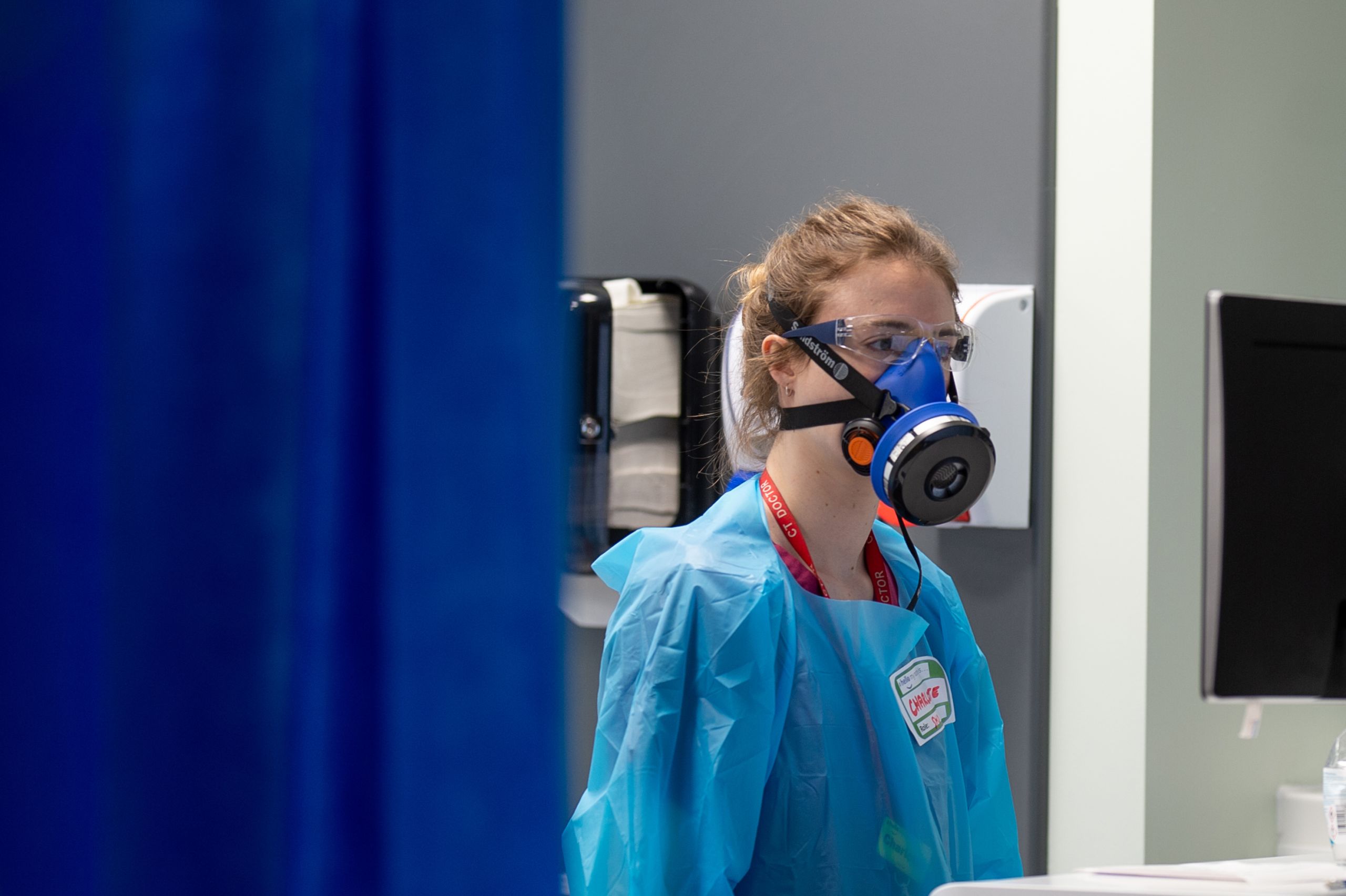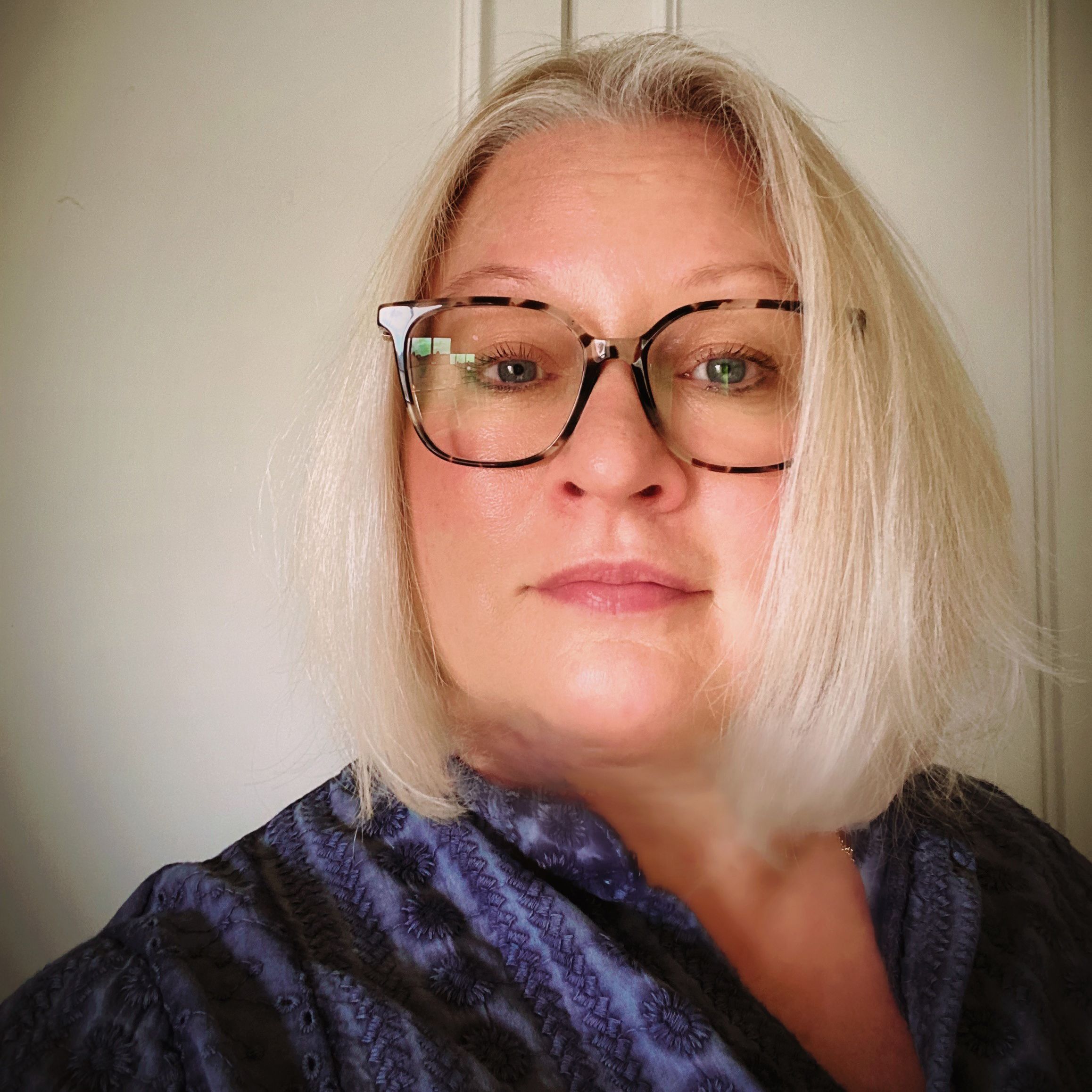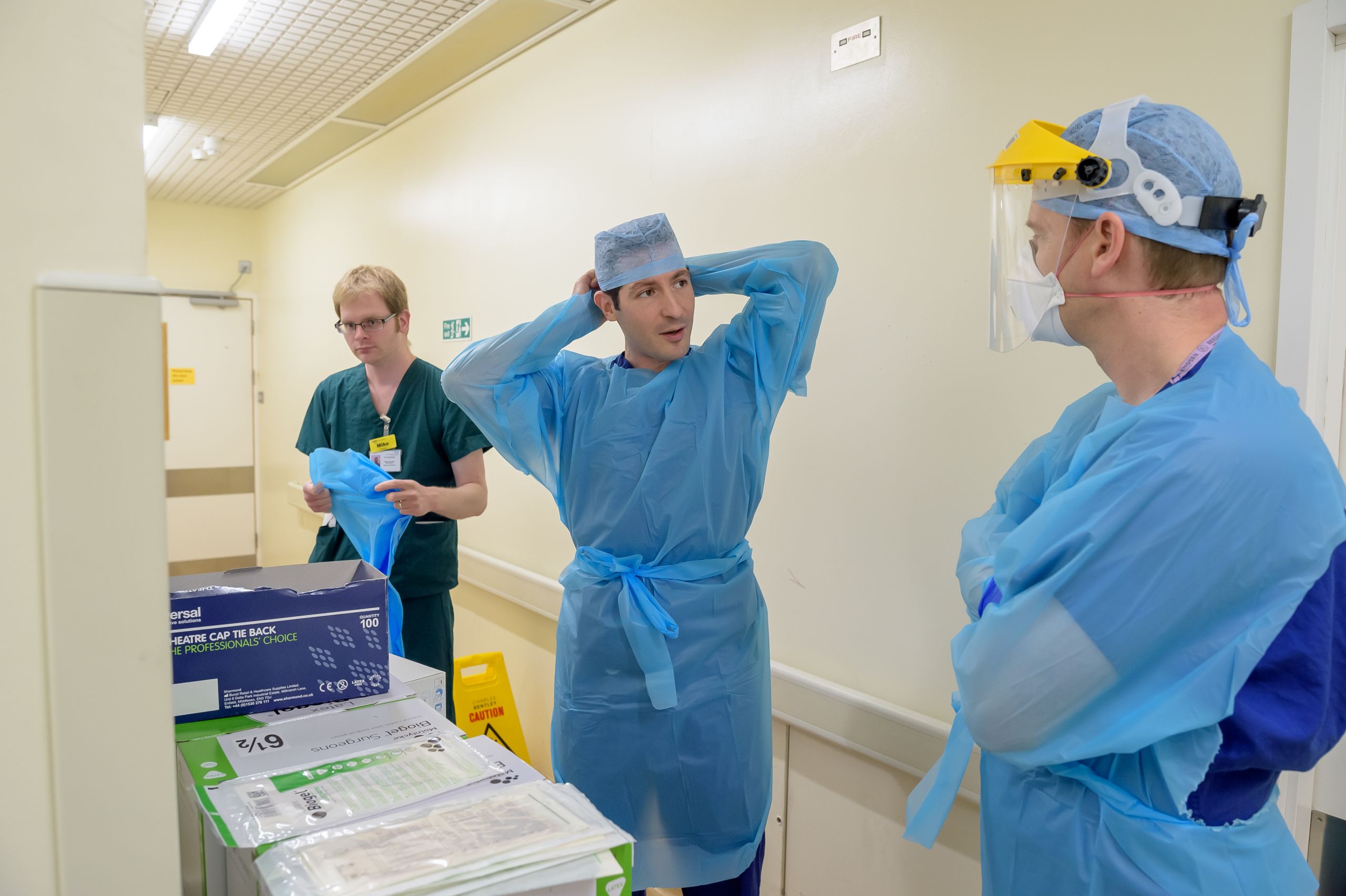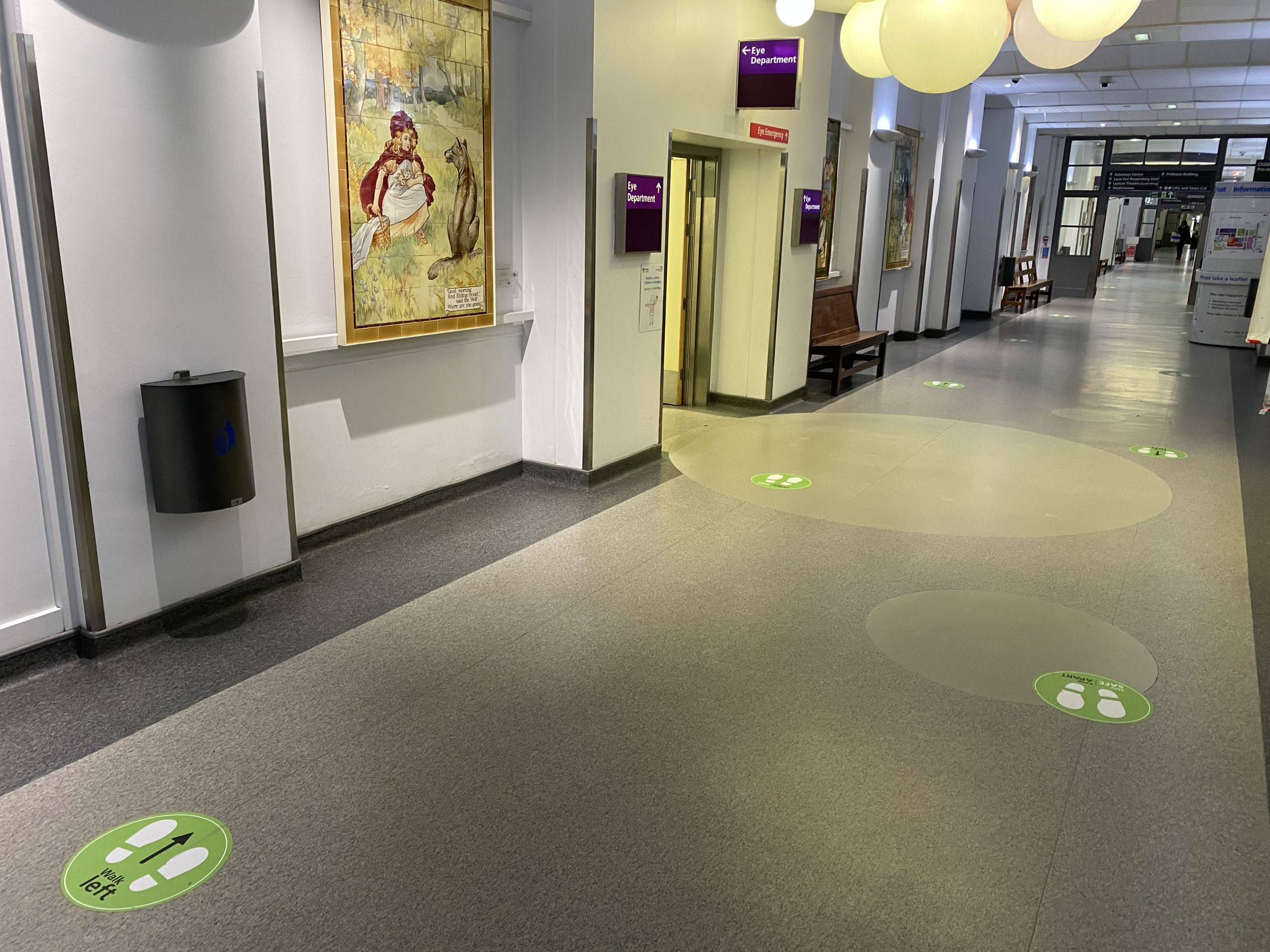Rachel's story

Rachel Bell
Vascular surgeon
“I was worried about my patients. Normally we have a regular influx of patients with emergency conditions. But they just didn’t come.”

“One thing the pandemic made me realise was I really, really became a doctor because I like seeing patients. I didn’t operate for 2 whole months and I didn’t see a single outpatient. I really missed that. There is something genuinely nice about trying to look after people and you can’t do it in the same way over the phone.
With the pressure on critical care from COVID-19, we were told there was no way we could continue to do surgery on the St Thomas’ site. We had to stop doing everything we would normally do – vascular surgery, cardiac surgery and interventional cardiology. We pretty much had to cease serving the community in the way we normally did.
The problem was we serve a population of 3.5 million covering the whole of south east London and north west Kent. We had this tremendous tussle. We couldn’t not do urgent surgery for patients who were bleeding, with gangrene, or in agonising pain.
“Not only did red tape disappear, so did competition...That was really refreshing, to see the spirit of camaraderie and collaboration.”
We started negotiating with the private London Bridge Hospital to run essential services out of there. We moved in the first week. I have worked at St Thomas’ for 15 years and I have been absolutely blown away by the can-do attitude of everyone in the Trust. Things I thought would have taken years ended up done in days.
We collaborated with St George’s and Frimley Park hospitals to share the load. Not only did red tape disappear, so did competition. It was very much we are all in this together and what’s best for our patients. That was really refreshing, to see the spirit of camaraderie and collaboration.
We split ourselves into a ‘clean’ London Bridge team (and an emergency vascular team at Guy’s) and a St Thomas’ team, segregating out any vulnerable staff to work in the clean team. I stayed at St Thomas’ to deal with the multiple operational issues – closing wards, redeploying nursing staff to ITU, supporting staff working at home. That’s why I had to stop seeing patients.
We had to decide which patients we would treat, which would be delayed, we had to contact them, explain what was happening and reassure them. It was a massive logistical exercise.
We redeployed 43% of our doctors and nurses to ITU, the highest proportion of any department in the Trust. We had a group that went in to ITU to put lines into patients, because we had that expertise. That went on for a number of weeks at the height of the pandemic. It was all hands to the pump.

43% of doctors and nurses were redeployed to intensive care
43% of doctors and nurses were redeployed to intensive care
There were a lot of worried staff. There were tactical meetings run by the Trust every day. Our job was to disseminate the information in a palatable way so our staff felt supported and not isolated if they were at home and we didn’t have extraneous people in the hospital.
I was really, really proud of how my team downed tools and got on with it together. They didn’t complain and were willing to do anything to help and didn’t fear for themselves. There were some who were frustrated because they weren’t in a position to help because they didn’t have the right qualifications.
I saw fear mainly among the administrative staff. They were hearing horrific stories on the web and in the news and didn’t have the expertise to assess them. The medical staff who had a better understanding of how the virus behaved were more worried about taking it home and infecting their families. Some staff did take more of a backseat.
I was worried about my patients. Normally we have a regular influx of patients with emergency conditions. But they just didn’t come. They were frightened of coming. I was very worried we would have a massive tsunami of sick patients descending on us. There is a lot of evidence some of them died.
We are starting to see an uplift in poorly patients with very painful legs that they just sat on for a number of weeks because they were too scared to come. Other units have started to see patients who needed immediate amputation because they waited too long. We haven’t seen the full horror of the legacy of COVID-19 yet.
“One day I came across a figure pushing a trolley with a huge pile of scrubs to the wards. It was Simon Blazer, associate director of finance, whose normal job is making sure we don’t go bankrupt.”
The hospital was a very strange place. The corridors were empty. Normally it is bustling, like a shopping centre. You could almost see the tumbleweed blowing through. One day I came across a figure pushing a trolley with a huge pile of scrubs to the wards. It was Simon Blazer, associate director of finance, whose normal job is making sure we don’t go bankrupt. I was blown away. That was what I mean about everyone pitching in.

The corridors in the hospitals were much quieter than usual
The corridors in the hospitals were much quieter than usual
The people in ITU got the plaudits – the free meals, lots of thank yous – and they deserved them. They worked extremely hard. But there were lots of others doing jobs outside their normal remit. The leadership did try very hard and did amazing work to make sure we were all thought of but I did worry about the haves and have-nots. I felt sad about that.
All the politics and the lack of reality from the government made me angry. We had PPE because of the outstanding procurement team we have here. But the constant changes in the rules made things difficult. The whole PPE thing became a big emotional deal.
We learnt an enormous amount about the organisation and ourselves. We will never go back to how we were pre-COVID. Video conferencing was not something we did often – now it’s normal. I just chaired a meeting with people from all over the country. No one had to travel, or get up at the crack of dawn. Meetings will be forever changed.
We have held webinars for 150 trainee doctors. It enables us to provide high quality teaching to many more people. We should have been doing this before but the pandemic has forced our hand.
We will probably run outpatients very differently, doing follow-ups by telephone or video call. We run our daily inpatient handover meeting by video call which means some people can be at home. For surgeons in very stressful jobs, that changes the life/work balance. I will definitely press to have a day at home after this – I am more productive.
We are fearful of a 2nd wave. It will be difficult to march the staff up the hill again. But I think they will do it. That is what they signed up for.”

Read more stories

